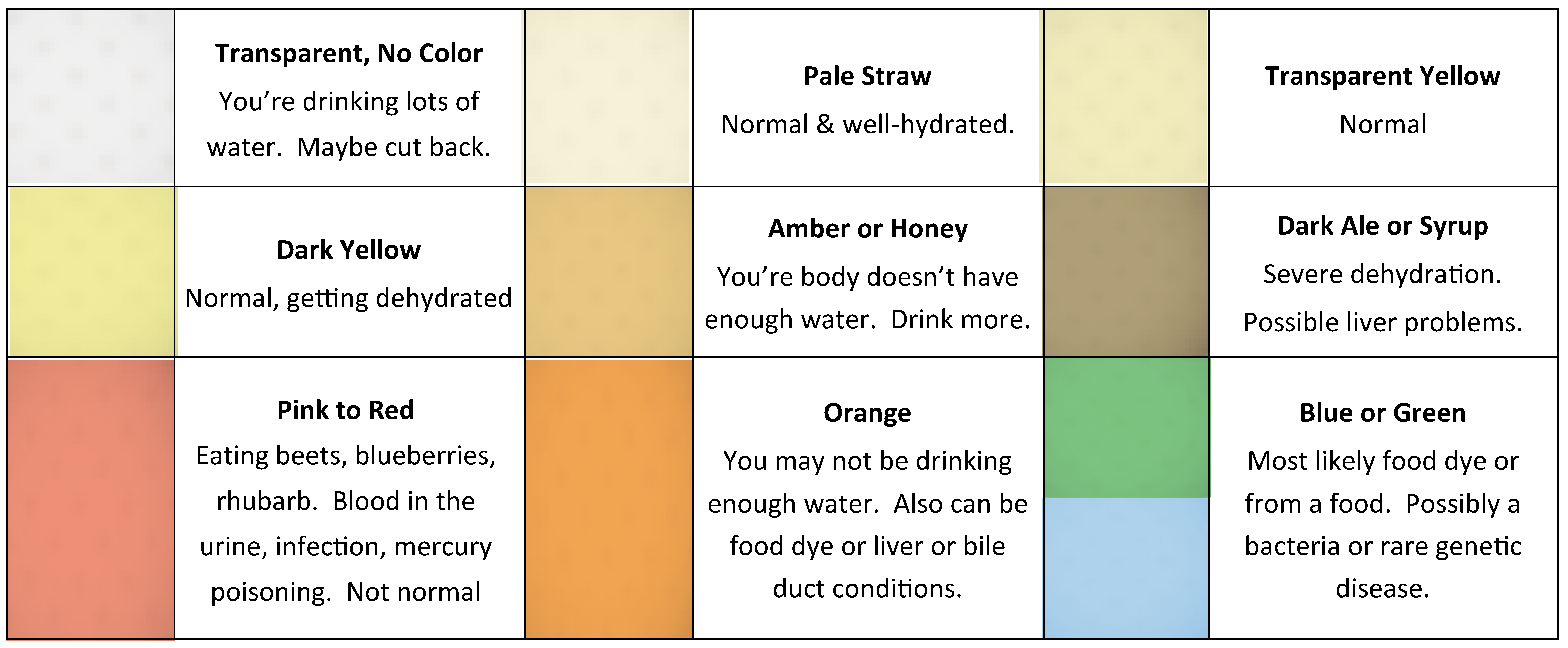

Yeah, it was an easy shot. I couldn’t resist…
To continue with our investigation of the channels of elimination in the body, this month we will consider urination.
Urine is the waste product produced by the urinary system. The urinary system is also called the renal system. It is composed of two kidneys, ureters, the bladder, and the urethra. The kidneys have millions of nephrons, or their functional units, and because of this, Nephrology is a field of science devoted to studying just the kidneys.
Along with eliminating urine from the body, the renal system helps to regulate blood volume, blood pressure, levels of electrolytes and metabolites, and regulate blood pH.
Urine is formed in the kidneys after the blood is filtered and other processes occur. This urine exits the kidneys via the ureters to the bladder. The bladder stores the urine until it is expelled during urination.
We produce 1-2 liters of urine daily in a healthy state, though this can vary based on circumstances such as fluid intake.
Urine is a mechanical barrier that prevents pathogens from entering our body by flushing away pathogens. This is similar to how tears flush away pathogens from the eyes.
To make urine, the body filters the blood, reabsorbs usable products, and secrets the waste.
Ideally, urine will only contain water, waste products, and excess ions. Protein in the urine indicates larger holes in the glomerulus (the capsule surrounding a bundle of capillaries in the urine that help to filter urine).
Some hormones have an effect on urine production. ADH, or antidiuretic hormone, stimulates water reabsorption in the body and encourages blood pressure to rise. Further, it slows urine production and causes it to concentrate in the kidneys. Parathormone, or PTH, encourages the kidney tubules to excrete more phosphates from the blood into the urine.
So why do women have to urinate more often than men? And why do pregnant women have to urinate even more frequently? The female has additional internal organs, the uterus and ovaries, which take up space in the abdominal cavity. It sits below the uterus; this means the bladder needs to be smaller in a woman than in a man. When a woman is pregnant, her uterus expands to accommodate the baby. This gives the bladder even less room meaning the pregnant woman will need to urinate more frequently.
The color of our urine can give us some insight into what is going on in our bodies. Remember, medications, laxatives, chemo, dyes, some foods (like beets), and other factors can change the color of your urine.

As you can see, there are varied meanings to the color of our urine; most often it can be attributed to not getting enough water or something we ate.
Do you check the color of your urine each time you use the bathroom?
As always, don’t hesitate to schedule an appointment if you need additional help!
